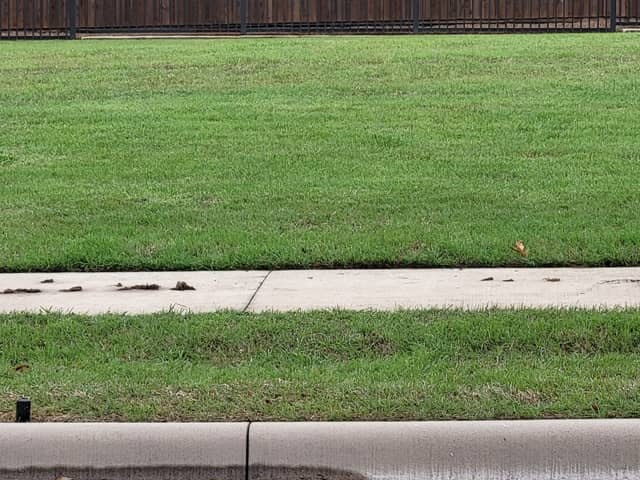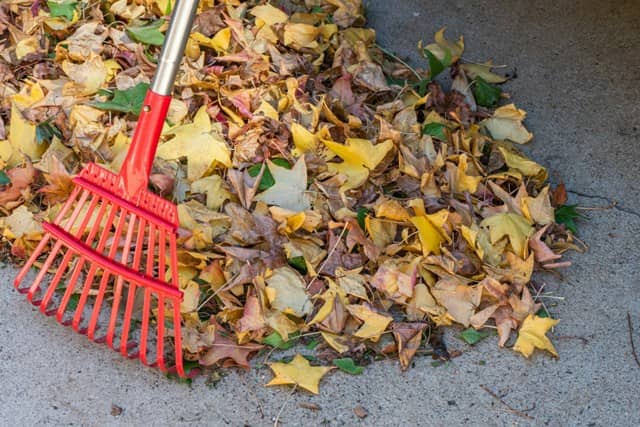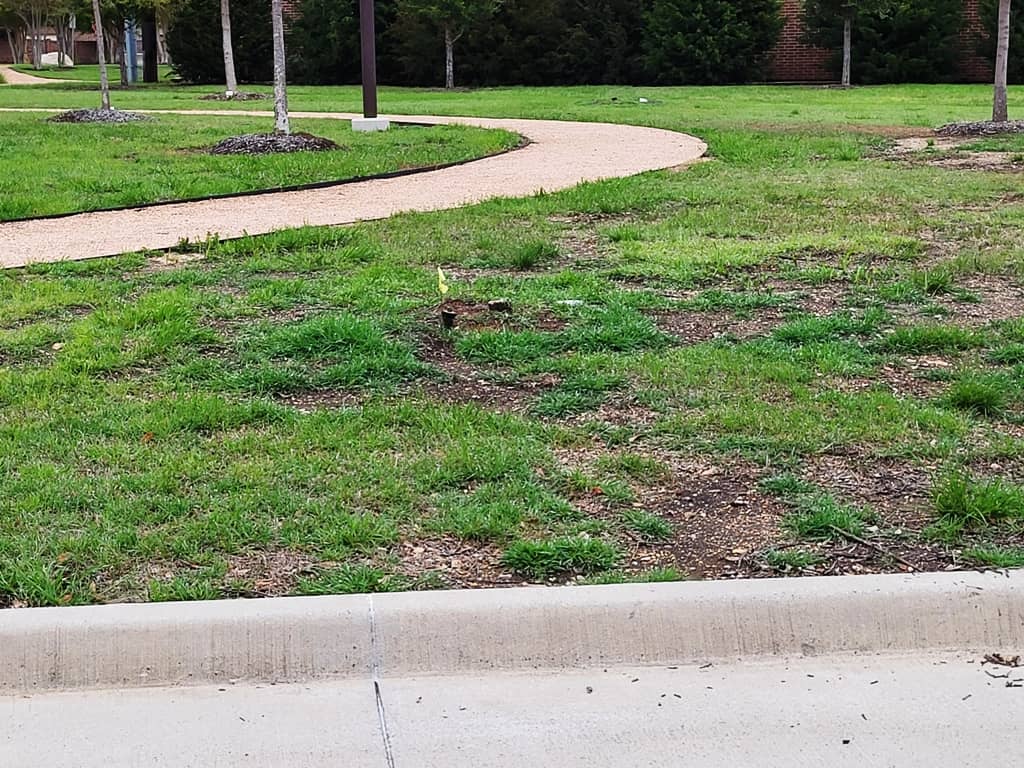
mainstreetlawn
How to Level a Bumpy Lawn in Texas
Whether due to sod installation or the effects of soil compaction and erosion over time, many Texas lawns develop lumps and bumps. Here are some step-by-step instructions about how to level a bumpy lawn in Texas.
Mow the Lawn Low
You will start the process of leveling out your lawn by mowing it. It’s important to mow the lawn as short as possible. This will help to reveal the low and high spots within the lawn.
Rake the Yard
Using a steel rake, remove all the leaves and debris from the grass and soil surfaces. Raking the yard will also help to give you a true picture of the terrain as well as start to open the ground up.
Dethatch the Yard
Going one step further after raking the yard, it’s important to dethatch it as well. Over time, soil accumulates plant matter such as leaves, blades of grass, and other debris. It’s important to open the soil up again and remove any thatch layers that have developed. Use a dethatcher machine or thatch rake to help remove leaves, debris, and dead grass from soil surfaces.
Aerate the Soil
Using a mechanical lawn aeration machine to aerate the soil. This will loosen the soil, facilitate proper drainage, and allow your soil to absorb more water and nutrients. Loose soil will settle more easily and help prevent future lumps and bumps in the lawn.
Create a Soil Mixture
Now that the lawn has been properly prepared, it’s time for new soil. The ideal soil combination will consist of 30% compost and 70% sand. You can oftentimes find this already mixed at a nursery. If this exact combination is not available to you, that’s ok. You could actually just use sand. However, it’s best to include some compost for the nutrients and to help keep the grass from drying out.
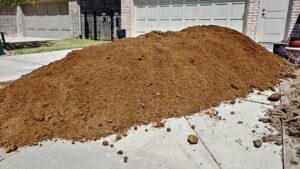
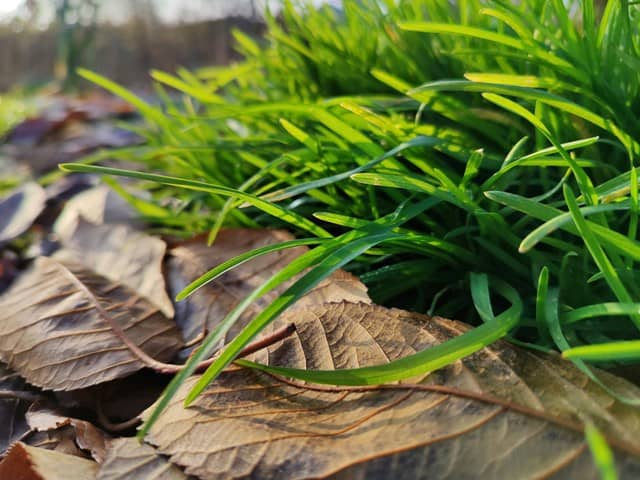
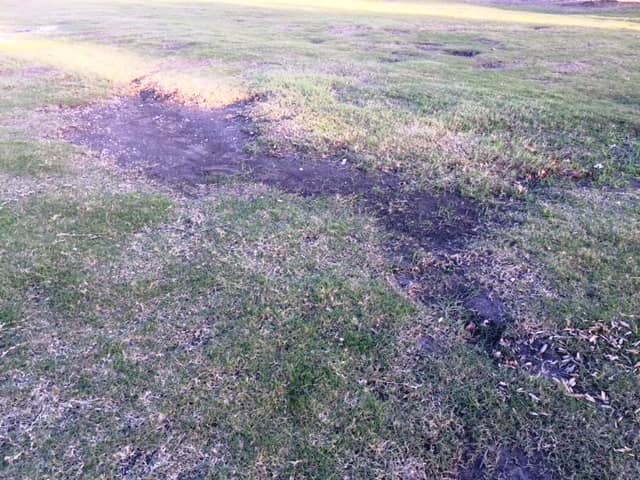
Fill Low Spots in the Lawn
Using the soil mixture you created, start by filling in the low spots. In areas without any grass, fill with the soil mixture or sand up to the level of the existing soil. In low-spot areas where there is grass, you should add 1/4″ to 1/2″ of your soil mixture or sand.
Topdress the Lawn
Now that you’ve addressed the low spots in your lawn, it’s a great time to topdress the rest of the lawn. Topdressing is the process of applying small layers of soil to large areas of your lawn and is best done with a 30% compost and 70% sand mixture. Topdressing will help to nourish your lawn and gradually level the less noticeable high and low spots. Distribute small piles of the soil mixture throughout all other parts of the lawn and distribute them evenly with a rake. Do not exceed 1/4″ of the soil mixture when spreading throughout the lawn, and make sure to properly level and grade the lawn for proper drainage.
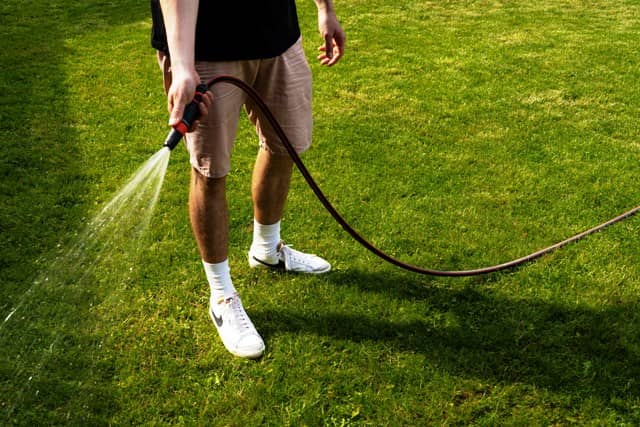
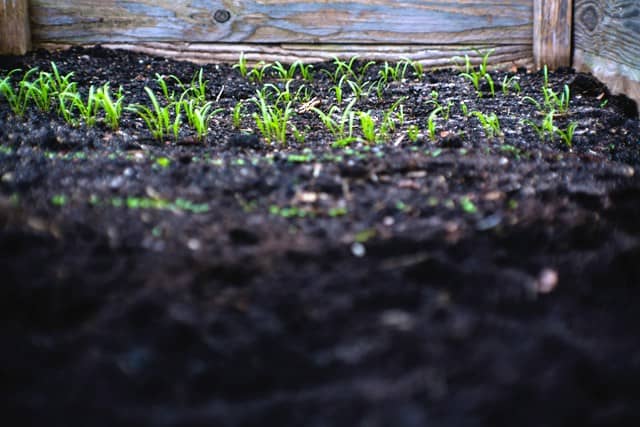
Water the Lawn
Water your entire lawn to help settle the new soil mixture or sand that you added to the low spots and all other parts of the lawn, if you decided to topdress it. You should program your sprinkler system for future watering, making sure not to overwater the lawn as it may cause the new leveling soil to erode.
Reapply Soil Mixture or Sand
After watering the lawn with a sprinkler system or a garden hose, you can check and reapply the soil mixture or sand to low spots without grass, if needed. In areas that you leveled where there was grass, wait until the grass starts growing through again before adding more of the soil mixture or sand.
Frequently Asked Questions about Leveling a Yard
Can you level a lawn by yourself?
Yes. Although the preparation can be labor-intensive, leveling your lawn may not require hiring a landscaping professional. All tools can easily be purchased at your local hardware store.
What is the best material to level my yard?
If your lawn has very little grass, sand will be the best material for leveling. If your lawn has a lot of grass, plan to use a combination of compost and sand.
What tools do I need to level my lawn?
At the very least, you will need to have the following tools: a wheelbarrow, a steel rake, a shovel, and a garden hose. If you need to do a bit more work on your soil, plan to include a thatch rake and a core aeration machine as well. Finally, if you need to completely remove areas of existing sod, it would be helpful to use a sod cutter.
How to level a yard without killing the grass?
Oftentimes, it’s necessary to disturb existing grass when leveling a yard. However, if you want to keep the grass intact and don’t mind leveling the yard over time, topdress it with a compost and sand mix.
Share this post
© 2024 · Main Street Lawn Care and Landscaping, LLC


